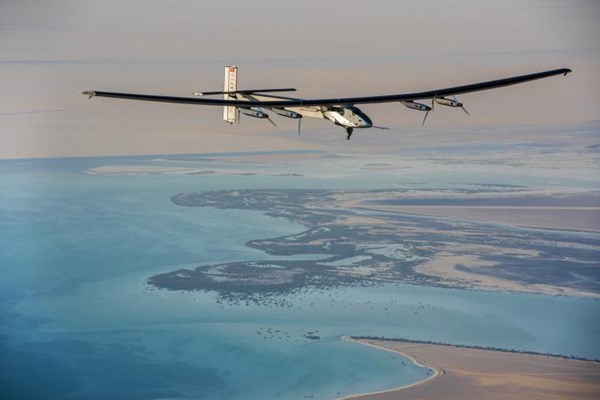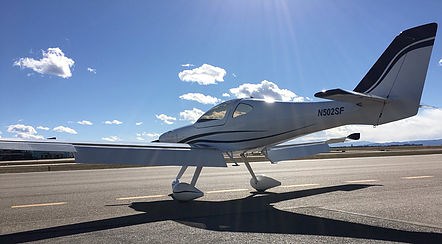Electric power for aircraft on the horizon
As a general aviation enthusiast and co-pilot — my husband and I fly a Mooney on occasion — I have been closely following the news about the Solar Impulse plane and the team’s historic round-the-world flight, on solar power alone.

Solar Impulse successfully completed its round-the-world flight this week.
As a general aviation enthusiast and co-pilot — my husband and I fly a Mooney on occasion — I have been closely following the news about the Solar Impulse plane and the team’s historic round-the-world flight, on solar power alone. In case you’ve missed this news, Bertrand Piccard and Andre Borschberg started an epic demonstration in Abu Dhabi back on March 9, 2015, and successfully completed 17 legs and 40,000 km in their solar-powered electric Solar Impulse 2 aircraft and returned to their starting point this week, on July 26. The trip took much longer than expected, because the 5-day crossing of the Pacific from Nagoya, Japan to Hawaii caused damage to the aircraft’s batteries, necessitating a long 9-month layover in Honolulu for repairs. The aircraft of course employs composite materials, as CW has pointed out in some past articles, including this one: http://www.compositesworld.com/articles/solar-impulse-2-pulse-on-the-future. CW’s Heather Caliendo was on hand when the plane landed in Phoenix, during its North American legs: http://www.compositesworld.com/blog/post/up-close-and-personal-with-solar-impulse-2.
Piccard and Borschberg’s achievement coincides with several items I’ve noticed over the past couple of days. First, this week marks the Experimental Aviation Assn.’s (EAA) AirVenture air show in Oshkosh, WI, US, often the setting for news and trends. Airbus is there exhibiting its E-Fan aircraft for the first time in the US. The E-Fan was first introduced at Farnborough Air Show in 2014, and the all-electric plane crossed the English Channel in 2015. The version in Wisconsin this week is E-Fan version 1.2, which incorporates a hybrid electric/gasoline engine on display for the first time. Airbus has teamed with Siemens to develop this hybrid concept and eventually scale it up for viable commercial application. According to a Siemens press release, the CEOs of both companies, Tom Enders and Joe Kaeser, endorse a major joint project towards the electrification of aviation with the goal of demonstrating the technical feasibility of various hybrid/electric propulsion systems by 2020. A team of around 200 employees will be working on this project to develop electrically-powered aircraft. This strikes me as pretty big news.

AEAC's Sun Flyer is on display this week at the Oshkosh air show.
And they’re not the only ones developing electric power for aircraft. As just one example, a company here in Colorado unveiled two months ago the Sun Flyer, and it’s also on display this week at Oshkosh. Developed by Aero Electric Aircraft Corp. (AEAC) headed by well-known engineer pilot George Bye, the Sun Flyer is targeted to training schools and bringing down the cost of flying — the cost of a gallon of leaded fuel for conventional aircraft like our Mooney is currently priced at about $5 per gallon, which adds to the steep price of flight training and, some say, the dearth of student pilots. Bye claims that energy cost for an hour in his aircraft could be as little as $1. That could really change the general aviation landscape.
Then, the US Environmental Protection Agency (EPA) announced Monday that it will impose emissions limits on US commercial aircraft, along the lines of a United Nations recommendation announced in February for international flights. Those limits require a 4% reduction in fuel consumption during cruise, beginning in 2020. And Europe’s Clean Sky public/private partnership program has been looking for years at breakthrough technology to reduce aircraft emissions.
It seems to me that all of this is pointing toward a shift in aviation, mirroring what has happened in the automotive sector: Planes, like cars, are being pulled into a new realm of lighter weight materials and alternative, even renewable, power sources, to meet increasingly more stringent emission targets. Composites, of course, have a place in this new scheme, so it’s a trend that may ultimately benefit our industry. And it would certainly make a ride in our airplane a lot quieter…
Related Content
Materials & Processes: Resin matrices for composites
The matrix binds the fiber reinforcement, gives the composite component its shape and determines its surface quality. A composite matrix may be a polymer, ceramic, metal or carbon. Here’s a guide to selection.
Read MoreMaterials & Processes: Fibers for composites
The structural properties of composite materials are derived primarily from the fiber reinforcement. Fiber types, their manufacture, their uses and the end-market applications in which they find most use are described.
Read MoreThermoplastic composites welding advances for more sustainable airframes
Multiple demonstrators help various welding technologies approach TRL 6 in the quest for lighter weight, lower cost.
Read MoreRecycling end-of-life composite parts: New methods, markets
From infrastructure solutions to consumer products, Polish recycler Anmet and Netherlands-based researchers are developing new methods for repurposing wind turbine blades and other composite parts.
Read MoreRead Next
From the CW Archives: The tale of the thermoplastic cryotank
In 2006, guest columnist Bob Hartunian related the story of his efforts two decades prior, while at McDonnell Douglas, to develop a thermoplastic composite crytank for hydrogen storage. He learned a lot of lessons.
Read MoreCW’s 2024 Top Shops survey offers new approach to benchmarking
Respondents that complete the survey by April 30, 2024, have the chance to be recognized as an honoree.
Read MoreComposites end markets: Energy (2024)
Composites are used widely in oil/gas, wind and other renewable energy applications. Despite market challenges, growth potential and innovation for composites continue.
Read More
















.jpg;maxWidth=300;quality=90)









